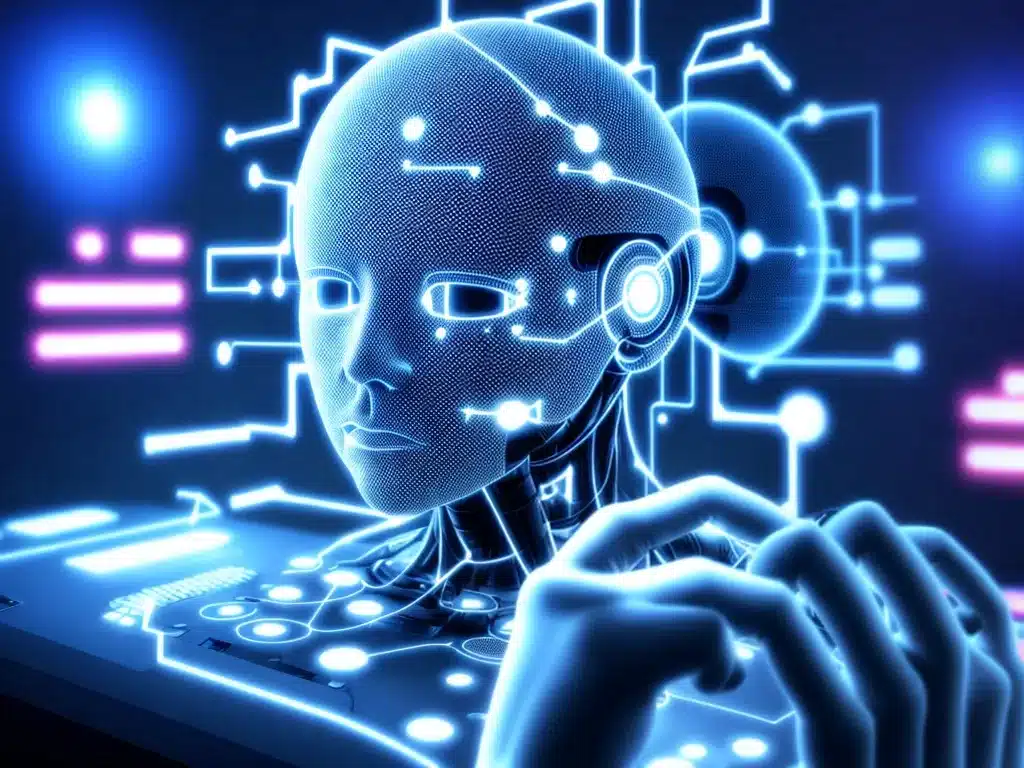

How AI is Revolutionizing Computer Interactions
Introduction
Artificial intelligence (AI) is transforming the way we interact with computers. From voice assistants like Siri and Alexa to self-driving cars, AI is enabling computers to understand natural language, make predictions, and autonomously complete tasks. These capabilities are opening up new modes of human-computer interaction that feel more intuitive, contextual, and personalized.
In this article, I will provide an in-depth look at how AI is revolutionizing computer interactions across three key areas:
Voice Assistants and Chatbots
computer vision and Facial Recognition
Adaptive User Interfaces
For each area, I will explain the key AI techniques involved, provide real-world examples, and discuss the benefits and potential risks. By the end, you will have a comprehensive understanding of how AI is fundamentally transforming how we communicate with machines.
Voice Assistants and Chatbots
Some of the most visible examples of AI in action are voice assistants like Amazon’s Alexa, Apple’s Siri, and Google Assistant. These systems rely on natural language processing (NLP) to understand spoken requests, generate natural responses, and take actions like looking up information, playing music, or controlling smart home devices.
Key AI techniques like speech recognition, conversational modeling, and text-to-speech synthesis enable smooth, natural verbal interactions. Over time, assistants can also utilize techniques like sentiment analysis to detect the user’s mood and tone of voice. This allows responses to be more empathetic and conversational.
“With sentiment analysis, Alexa can now detect frustration in a user’s tone of voice and adjust its responses accordingly to be more patient and helpful.”
In addition to voice assistants, AI powers chatbots on websites and messaging platforms. These bots field customer service inquiries, provide interactive content, and even offer counseling services. Using similar NLP techniques as voice assistants, chatbots analyze text conversations to understand questions and respond appropriately.
“Chatbots utilize NLP to hold meaningful text conversations without human involvement. This provides faster, 24/7 customer service at a lower cost.”
By enabling natural verbal interactions, voice assistants and chatbots make computers more accessible. However, concerns around data privacy, accountability, and social implications have arisen. Overall though, these technologies represent a major shift in how we communicate with computers.
Computer Vision and Facial Recognition
Another area where AI is enhancing interactions is computer vision – allowing computers to identify objects, interpret images, and process visual data like a human. With deep learning techniques like convolutional neural networks (CNNs), computers can now accurately recognize scenes, detect faces, and interpret facial expressions.
This is enabling more intuitive visual interactions. For example, visual chatbots like Anthropic’s Claude can now read facial expressions during conversations to better understand user intent. Apps like Seeing AI narrate the visual world aloud to aid the visually impaired.
“Computer vision apps are making visual information accessible to more users. The blind and visually impaired can now navigate the world more independently with narrated assistance.”
In addition, computer vision powers facial recognition – identifying an individual from a digital image or video frame. This enables face-based biometric security, like iPhone’s Face ID unlock. However, the technology remains controversial given privacy concerns around ubiquitous facial tracking.
Overall, computer vision gives computers more human-like visual perception. This allows interactions based on visual cues like expressions, gestures, and scenes. But policies are still needed to prevent potential harms.
Adaptive User Interfaces
Finally, AI is allowing for more adaptive and contextual user interfaces. Rather than static screens, AI can enable interfaces that personalize themselves based on each user and situation.
Key techniques like reinforcement learning allow interfaces to learn optimal actions from continual user feedback. User activity and behaviors are analyzed using deep learning to build detailed profiles. From this, interfaces can auto-generate tailored content and interactions unique to each user.
For example, TikTok’s AI analyzes user watching patterns to predict which videos they will most likely enjoy watching next. This results in a hyper-personalized feed optimized to each user’s evolving interests. Similar principles are being applied across areas like education, healthcare, and e-commerce.
“With AI, user interfaces morph and respond in real-time based on individual users and contexts. This allows interactions to be dynamically personalized at scale.”
However, overly-personalized interfaces risk creating echo chambers and addiction. Regulations around transparency may be needed as AI becomes further embedded into user interfaces.
Conclusion
In summary, AI is transforming human-computer interaction across three core areas:
-
Voice assistants and chatbots enable natural language conversations with computers using techniques like NLP and sentiment analysis.
-
Computer vision and facial recognition allow more intuitive visual interactions by mimicking human visual perception.
-
Adaptive user interfaces can dynamically personalize themselves to users and contexts using deep learning and reinforcement learning.
Together, these innovations are making interactions with computers more convenient, accessible, contextual, and personalized. User expectations for AI-powered interfaces will only grow further. However, risks around privacy, accountability, and social implications should be addressed. If harnessed responsibly, AI promises to fundamentally redefine how humans interact with machines.












